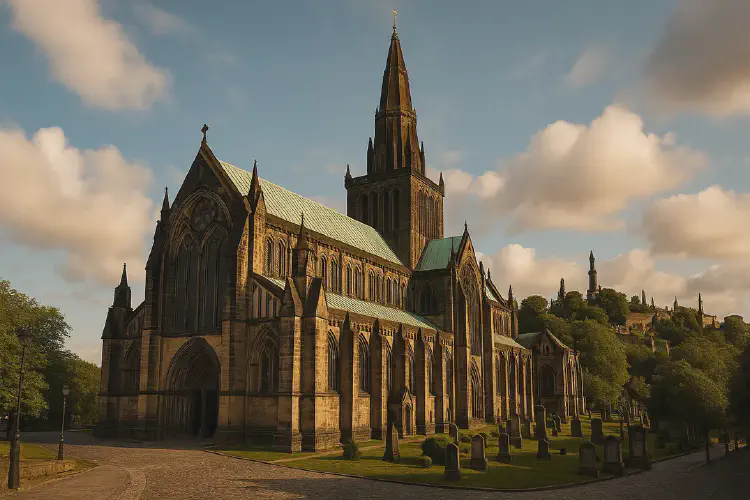History of Glasgow
Glasgow’s story is one of transformation—from a medieval religious center to an industrial powerhouse, and now to a modern cultural capital. Its history is woven into the city’s streets, architecture, and identity.
- Scotland Tours
- 2 min read

Early Origins
Glasgow began as a small religious settlement around the 6th century, founded by St. Mungo (also known as St. Kentigern). His legacy is still visible at Glasgow Cathedral, which became a focal point of the medieval city.
The Medieval Burgh
By the 12th century, Glasgow was established as a royal burgh and market town. Its cathedral, university (founded in 1451), and trade fairs helped it grow in importance.
The River Clyde and Trade
In the 17th and 18th centuries, Glasgow flourished as a hub of trade, particularly tobacco, sugar, and later cotton, connecting Scotland to transatlantic markets. The River Clyde was central to this growth, earning Glasgow global prominence.
The Industrial Revolution
The 19th century transformed Glasgow into the ‘Second City of the Empire.’ Shipbuilding, heavy engineering, and textile industries made it one of the world’s leading industrial cities. Grand Victorian architecture, such as the City Chambers and Kelvingrove, reflects this prosperity.
Decline and Renewal
Like many industrial cities, Glasgow suffered decline in the 20th century, with job losses and urban challenges. However, from the 1980s onward, the city reinvented itself as a cultural and creative hub, celebrated for its art, design, and music.
Modern Glasgow
Today, Glasgow blends its industrial heritage with modern innovation. It is known for world-class museums, a thriving music scene, universities, and regeneration projects along the River Clyde. Its motto, ‘Let Glasgow Flourish,’ captures its enduring spirit.
Why This History Matters for Visitors
Understanding Glasgow’s history helps travelers see beyond the surface. From medieval cathedrals to shipyard cranes, every part of the city tells a story of resilience, reinvention, and cultural pride.